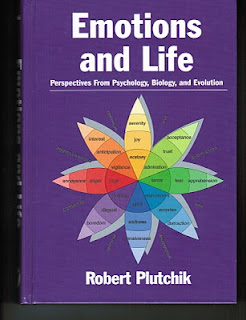If you haven't read My Journey to Feeling: Part 1 you may want to start with that before continuing here.
* The word "emotion" includes the word "emote" which (per Merriam-Webster online) means "to give expression to emotion especially in acting". We can say that emotion implies action. For example, the action associated with fear is fight or flight.
* In the same way that your feelings interpret your environment, you also send out 'vibes' or emotional signals to others.
* We humans don't have claws, beaks, fangs, venomous stingers, horns or antlers. We're pretty helpless when we're alone. However, in a group we "kick butt". Emotion sense-feeling is the pre-verbal group language.
* If you dampen a feeling, you also dampen the outbound signal to others. If others don't respond to you emotionally it could be because you're not giving them anything to respond to.
* If you have trouble identify feelings, a good friend or therapist who is attuned to hearing verbal cues or "emotional words" can help you identify your core feelings. In these examples, the base emotion is fear. Although the person may not explicitly report feeling afraid, the underlying emotion may be verbally revealed, for example:
- I'm afraid what she'll say if I...
- I'm scared of what will happen if I...
- I'm afraid of you because...
- etc...
(Sometimes in Wujifa Zhan Zhuang class, I'll be receiving an adjustment to my structure/posture and this will take me to the edge of an emotional reaction and I'll choke back and not express that emotion. Just too scary to let it go... I wonder how zhan zhuang would feel to me if I weren't holding so much... ? )* Imagine living in a state of constant vigilance to keep the damper on. It must be like being on guard duty 24x7 without ever getting some R&R. Must be very tiring.
* How much of your posture is an embodiment of emotional cowering? How would your posture, your structure change if you were to allow the free expression of all emotions, not damper emotions, not holding?
* If you feel free, relaxed, and emotionally open in one situation but not another, it may be that the perceived threat is removed. However, the internal pattern persists. It is that emotional neuro-muscular patterning that is the focus of changing. What is the threat level? Is it even real? Is it a "ghost" from the past irrelevant to the present?
* Every time you get into a situation where you feel yourself dampening the feeling, simply tell yourself, "I am afraid." Doing so "puts it on the radar", so to speak. It elevates the pre-conscious, pre-verbal feeling into verbal consciousness. It helps makes the feeling noticeable and so it becomes track-able over time.
* A book I'm currently reading and which is giving me some background information is Emotions and Life: Perspectives From Psychology, Biology and Evolution by Robert Plutchik (2002). This reads as a college textbook summarizing many theories and perspectives and research. I like the cover:

* Another source I've found useful in helping me identify the breadth of my emotional feelings is the List of Emotions at Wikipedia specifically, the "Emotions by Groups" section ("... tree structured list of emotions as described in Parrot (2001)" ) . Notice that "tension" is the tertiary feeling of "fear".


No comments:
Post a Comment